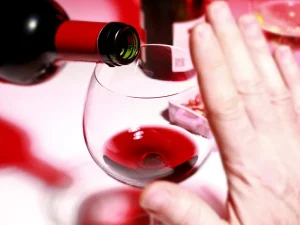
Alcohol Relapse Rates: Abstinence Statistics, How to Avoid &…

If you’ve experienced an extended relapse, you’ll likely benefit from medical detox, where any withdrawal symptoms are managed under medical supervision. Once your doctors in detox have made a full assessment of your condition, they will be able to recommend whether or not they think you would benefit from going back to rehab. Likewise, if you have not previously completed alcohol rehab after alcohol detox, you should consider this as a way to increase your chances of long-term sobriety. The front page of DrugAbuseStatistics.org features the most noteworthy drug abuse data, including overdose deaths, demographics, mental health, drug abuse treatment programs, and the cost of the War on Drugs. A personalized and comprehensive treatment plan is essential for preventing alcohol relapse. Camelback Recovery offers a variety of treatments, including medication-assisted treatment, to support individuals in their recovery process.
Alcohol Recovery Statistics

Even if you were buying the cheapest alcohol, sobriety could still save you a lot of money. You could be spending an average of $200 to $300 a month on alcohol if you drank alcohol every day. alcohol relapse statistics Daily drinking can have serious consequences for a person’s health, both in the short- and long-term. Many of the effects of drinking every day can be reversed through early intervention.
National Statistics on Relapse Rates

The test is free, confidential, and no personal information is needed to receive the result. A better approach, however, involves judging the actual quality of care a facility provides—during and after the formal treatment period. Engaging in high-risk behaviors or situations, such as attending parties where substances are present, can trigger relapse. Relapse rates vary significantly depending on the specific substance and the individual’s unique circumstances. This underscores the complex nature of addiction and the ongoing challenges in maintaining long-term sobriety.
Psychological and Emotional Factors
- In earlier analyses based on this sample, we identified 1-year risk factors for overall 8-year non-remission [31].
- Additionally, outside of individuals in the criminal justice system, the participation in specific interventions (i.e., Alcoholics Anonymous participation or drug screens) is voluntarily making it difficult for providers and researchers to measure effectiveness.
- For people who have established a sustained period of sobriety, relapse doesn’t occur overnight.
- Recovery is characterized by continual growth and improvement in one’s health and wellness while managing setbacks, which are a natural part of life.
Skin monitors have also been used to detect alcohol use but are limited to alcohol, expensive, and usually only available to individuals in the criminal justice system. Several forms of therapy have been widely used to help individuals struggling with addiction. The various forms of therapy share many common elements, and a combination of different approaches are useful for https://ecosoberhouse.com/ an individual. Some patients early in recovery may set up unreasonable expectations in that they believe they will never again think about using or having a relapse. Providers need to emphasize that occasional thoughts of using or cravings are a common part of recovery so they can help the patient equip themselves with the skills needed to work through these challenges.
- Alcohol relapse occurs in almost one-third of recovering alcoholics during their first year of sobriety.
- The adaptations make the brain crave alcohol, which makes it harder to quit drinking.
- These results add to growing evidence that participation in treatment and/or AA contributes to better short-term alcohol-related outcomes.
- Even people who get help, attend a treatment program, and are actively in recovery, can relapse.
However, it takes work to stay in recovery, and even the hardest-working person can experience slips, lapses and relapses during the alcohol recovery process. These drugs also have a high potential for abuse; this may or may not be due to addictive properties. Drugs that are considered “gateway drugs” (that is, substances that are often precursors to abuse of other, possibly more dangerous drugs) or deemed a public health risk may also be listed under Schedule I. Consistently elevated activation in these two brain regions across different stages of alcohol use disorder may indicate both brain changes due to heavy alcohol use and a biological risk factor for alcohol use disorder.
How can a person prevent relapse and stay sober?
After providing informed consent, 628 eligible individuals completed a baseline inventory described below (for more information about the initial data collection process, see Finney & Moos [41]). Individuals who entered the study had an alcohol use disorder, as determined by one or more substance use problems, dependence symptoms, drinking to intoxication in the past month and/or perception of alcohol abuse as a significant problem. In treated samples, women and older, married and bettereducated individuals tend to experience better short-term outcomes [12-14].

Furthermore, many treatment centers and facilities offer alumni programs that allow program graduates to stay involved. Alumni programs provide accountability and let individuals remain as part of the supportive recovery community. Rehabs with alumni networks typically connect individuals with this resource while they are still in treatment so they are already part of the community when formal treatment ends. Neglecting self-care activities, such as regular exercise, healthy eating, and sufficient sleep, can also increase the risk of relapse. The graph below illustrates the national relapse rates for different addictions. A variety of peer support programs have been established to allow individuals who have progressed in recovery to assist people in earlier stages.

The study also compared negative affect, craving, self-efficacy, and perceived expressed emotions between the alcohol-dependent participants versus the opioid-dependent ones. The chronic nature of addiction means that for some people relapse, or a return to drug use after an attempt to stop, can be part of the process, but newer treatments are designed to help with relapse prevention. Relapse rates for drug use are similar to rates for other chronic medical illnesses. If people stop following their medical treatment plan, they are likely to relapse. Ultimately, by investing in research, policy initiatives, and community-based programs that focus on relapse prevention and long-term recovery support, we can create a more supportive and empowering environment for individuals struggling with addiction.